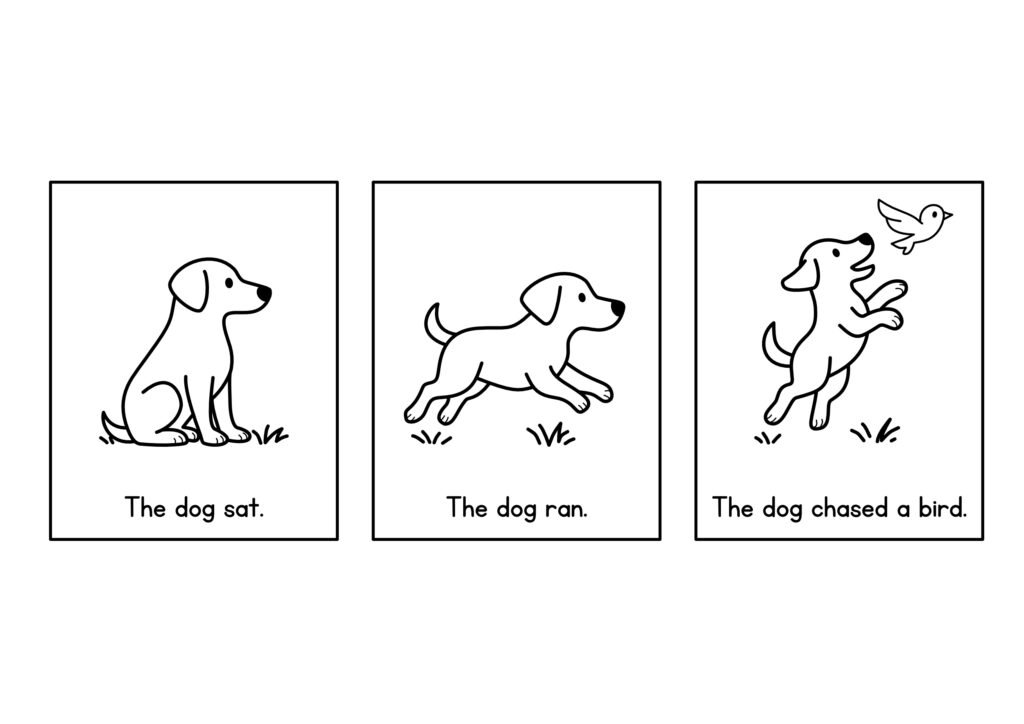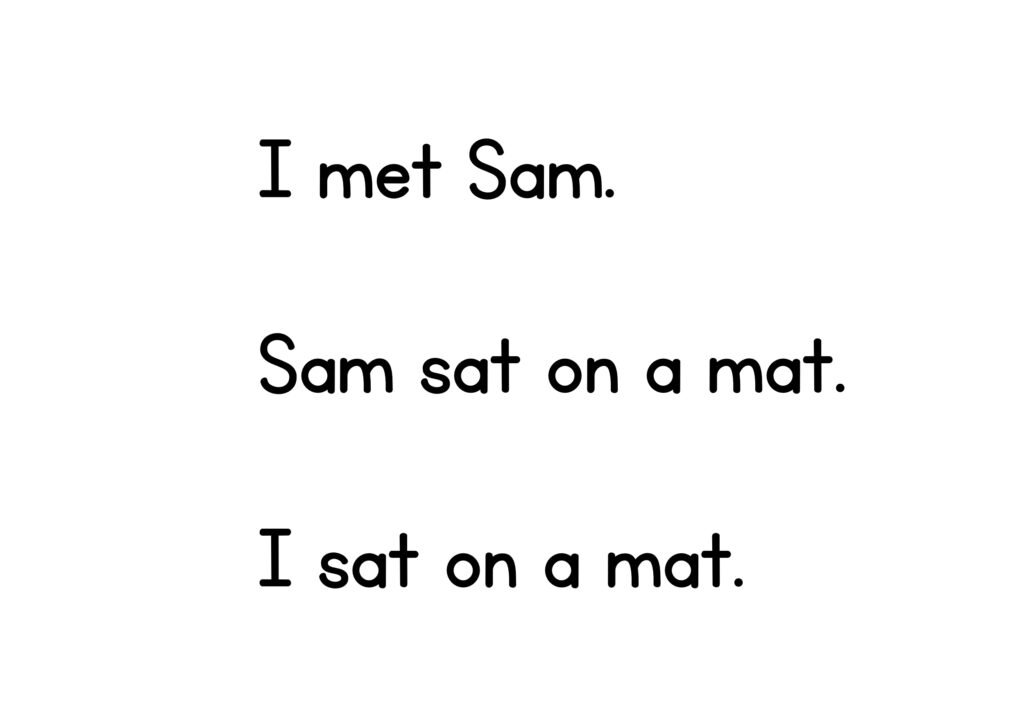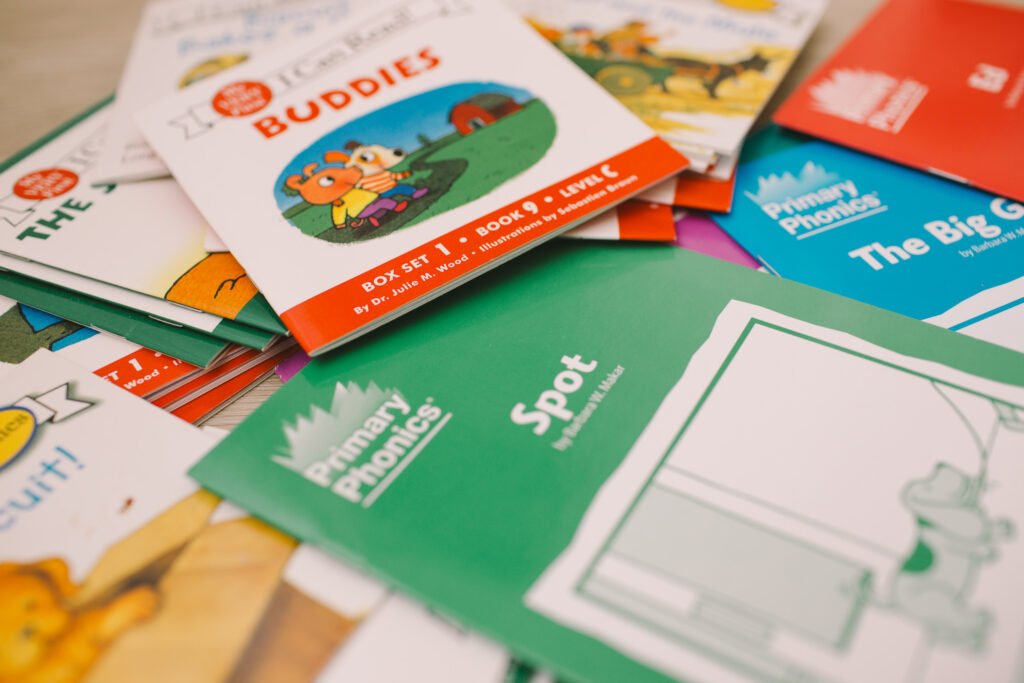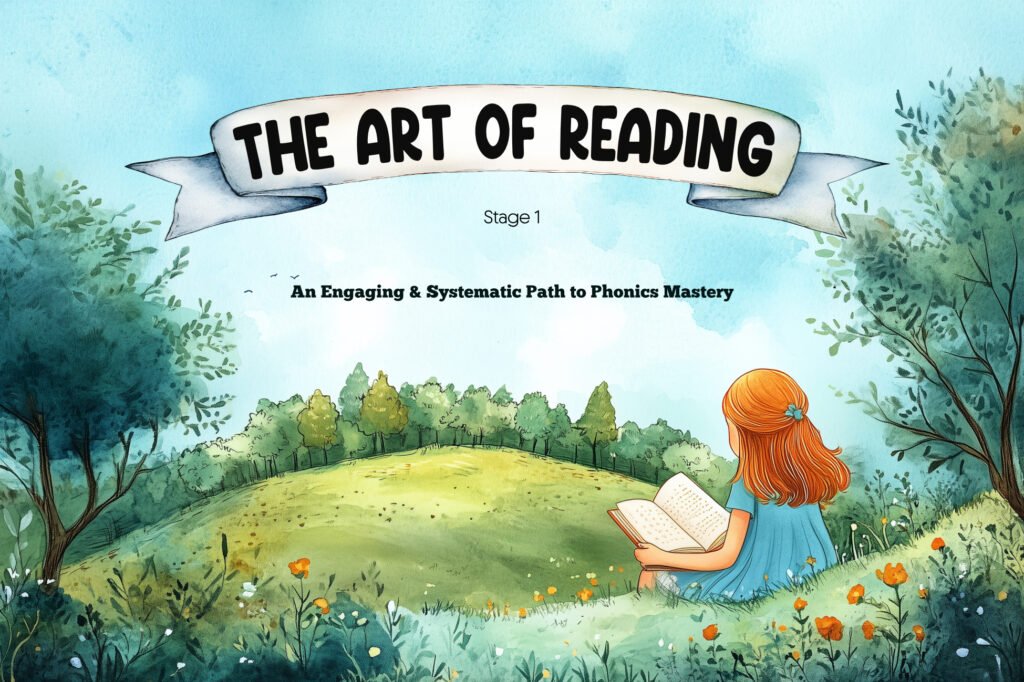There are a lot of phonics readers out there. Not all phonics readers are equal. How do you pick the ones that would work for your child?
We can help you undertand the difference between two kinds of readers.
When children are learning to read, the kind of readers they start with really matters. The goal of phonics instruction is to help children master one concept at a time. As much as we want children to enjoy the pictures and full stories in books, including words they have not learned to decode – or words that simply help the story flow better – won’t help them build the skills they need to decode words on their own.
There are two types of phonics readers.
They are: Decodable Readers and Predictive Readers. The decodable readers are written to match the phonics lessons a child has done. They are carefully sequenced to match a child’s ability to decode using only the sounds they’ve been taught. Predictive readers, on the other hand, use repeating phrases and pictures to build a story and help children “read” the context, instead of decoding each word.Let’s look at Predictive readers:

This is an example of a predictive phonics reader:
1. The dog sat.
2. The dog ran.
3. The dog chased a bird.
WHAT DO YOU NOTICE?
The first phrase is repeated. As a result, children frequently memorize the beginning of sentences and guess the remaining words based on the pictures, rather than sounding them out. On top of that, these books often include words that are too difficult, like “chased” or “bird.” Chased is a silent-e root word in past tense with the suffix -ed, and bird contains a controlled R sound (both concepts are stage 3 phonics concepts and are not appropriate for beginner readers). The words in predictive phonics readers may seem simple to an adult, and the pictures often match, but a beginner reader may not yet have the tools to decode them, making the reading experience frustrating and counterproductive.
decodable readers:

In general your phonics curriculum will include matching decodable readers. These books use only the sounds and letter patterns a child has already been taught. As in the above example, a child has learned short vowel sounds and a handful of consonants like M, S, T, and N, yet they are still able to “decode” (read) all the words in the reader.
Despite the child having very limited bank of sounds that they know. They would easily be able to decode every single word on the page. The word sequence is rotated to prevent parroting the previous line. Decodable phonics readers become gradually more challenging with each new story as the child learns new concepts. That way, kids systematically review what they’ve learned and experience success at every step, without the frustration of being asked to read words they aren’t ready for.
To really learn to read well, children need to identify the sounds in words, blend them and comprehend the meaning of the word. That’s how they’ll progress to more complex books with ease and confidence.
The goal of phonics instruction is to help children master one concept at a time. While fun pictures and engaging stories are wonderful, putting difficult words into beginner books does not help children build the foundational skills they need. If you want to help your child become a confident, capable reader, decodable readers are the best choice. They follow what your child is learning, help them grow step by step, and give them the tools to read anything they come across.
So what are the best phonics readers for beginners?
You decide.

